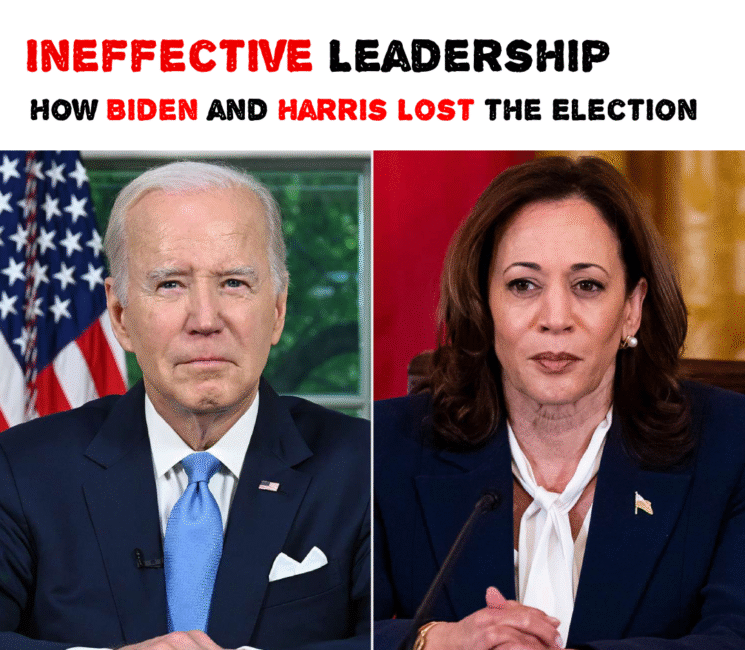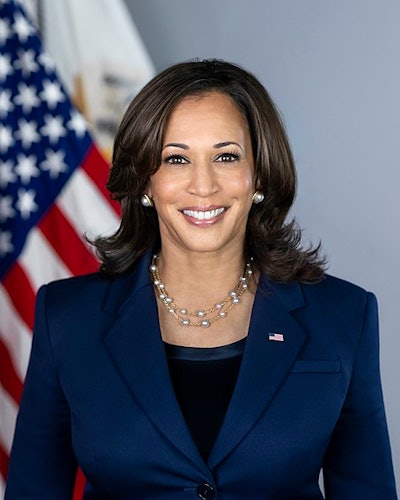Ineffective Leadership: How Biden and Harris Lost the Election

Donald Trump’s return to the presidency has stirred a wave of strong emotions across the nation. Many are experiencing disappointment, frustration, and even shock. As discussions unfold, blame is being cast in various directions. Some point to Black and Hispanic voters, alleging their support for Trump played a role, while others focus on young or first-time voters and even white women.
Amid this search for accountability, some critics attribute the outcome to Kamala Harris, a prominent Democratic candidate, while others believe broader factors were at play. A segment of voters argues that Harris’s campaign lacked a clear and compelling policy direction. Additionally, some contend that the Biden administration’s handling of international affairs—particularly its stance on the Israel-Gaza conflict—alienated key voting blocs.

Some critics argue that mainstream media’s portrayal of Kamala Harris—highlighting her perceived failure to address everyday concerns like rising grocery prices—ultimately harmed the Democrats’ chances. Even members within the Democratic Party have echoed these sentiments. However, reducing the election outcome to these factors ignores a larger issue—one intertwined with deep-seated racial and gender biases.
These prejudices became even more pronounced once Harris secured the Democratic nomination, shaping both Trump’s campaign rhetoric and public perception. As a result, a considerable portion of white voters gravitated toward Trump, reinforcing the systemic racism and misogyny that have long influenced American politics. This dynamic played a pivotal role in his victory.
Compounding the situation, many individuals who had previously voted against Trump in 2020 opted to sit out this election, inadvertently paving the way for his return. While perspectives on the matter may differ, the reality remains unchanged—Trump is back in office. The question now shifts from why he won to how his opponents plan to respond and challenge his administration moving forward.

Amid Trump’s presidency, it’s crucial to recognize the forces that sustain his power. A combination of wealth, manipulation, and governance operates in his favor, allowing him to remain a central figure in an alliance that upholds white supremacy, Christian nationalism, unchecked capitalism driven by greed, aggressive foreign policy, and deeply ingrained misogyny.
Though Trump may not personally embody all these ideologies, he willingly aligns himself with them when it serves his interests. His political career has been defined by transactional power, leveraging influence to his advantage. However, those backing him—such as key figures within his administration—are far more ideologically driven. This is particularly evident with figures like Stephen Miller, a longtime advisor notorious for his hardline stance on immigration.
Miller, the architect behind policies like the Muslim ban during Trump’s first term, is expected to push similar narratives once again. Alongside him, officials such as former ‘Border Czar’ Tom Homan and DHS head Kristi Noem are poised to enforce immigration policies rooted in racial bias and controversial legal interpretations.
Concerns are mounting within immigrant communities and among advocacy groups who have worked closely with them. The apprehension extends beyond immigration policy to Trump’s likely appointments in key government sectors, particularly those overseeing military strategy, foreign relations, and intelligence. Many of his preferred candidates are known for prioritizing intervention over diplomacy, reinforcing supremacist ideologies, and quietly endorsing militaristic expansion.
Regulatory agencies responsible for holding corporate interests in check also face an uncertain future. Many of Trump’s potential appointees champion an unregulated form of neoliberal capitalism that prioritizes profit over ethics, further consolidating power among the wealthy elite. While the situation may seem dire, opposition to Trump’s administration is not without options.
To counter these challenges, it’s essential to remain focused, engaged, and united rather than succumbing to fear or internal divisions. A strong, charismatic leader capable of challenging Trump’s influence must emerge. Additionally, opposition efforts must go beyond identity politics and protests—grassroots movements need to incorporate economic messaging and demonstrate the leadership potential within the Democratic Party.
The real challenge lies in confronting Trumpism—an American brand of fascism cloaked in patriotism and fueled by capitalists who thrive on suppressing labor unions and disregarding the workers who built their wealth.
It’s important to recognize that this rise of authoritarianism didn’t begin with Trump’s 2016 presidency. It has been simmering beneath the surface for decades. Historical parallels can be drawn from the literature opposing the fascist movements of the 1930s, an era when authoritarian ideologies gained their strongest foothold worldwide.
One striking example of this resurgence was the 2024 rally where Trump supporters revived the spirit of the fascist gathering at Madison Square Garden decades earlier. The themes of Sinclair Lewis’ anti-fascist novel It Can’t Happen Here feel eerily relevant, as the MAGA movement serves as a modern iteration of those same dangerous ideals.
History has shown time and again that overcoming such deep-rooted biases and divisions requires more than political maneuvering or rhetoric. It demands a united effort from the people to push back against the forces that sustain authoritarian power. This leads to the crucial question: How can we dismantle a system designed to oppress the majority while consolidating control at the top?
Leave a Comment